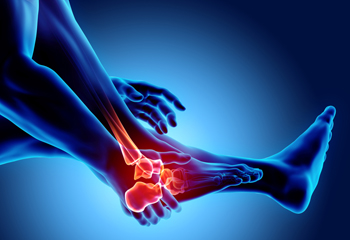Blog
Items filtered by date: July 2025
Chiropractic Support for Stress and Low Energy

Stress and low energy are common concerns that affect overall well-being and quality of life. They may arise from many sources, including strained relationships, financial pressures, demanding schedules, and emotional overload. These challenges can lead to fatigue, poor sleep, and tension throughout the body. Chronic stress often disrupts the nervous system and impacts hormone balance. A chiropractor can help by improving spinal alignment, enhancing nervous system function, and reducing physical tension that may contribute to stress. Gentle care may also support better sleep, clearer thinking, and more balanced energy levels. If you feel overwhelmed or persistently tired, it is suggested that you consult a chiropractor who can offer natural, effective support to restore balance and help you feel your best again.
Experiencing ongoing stress and low energy can wear down both body and mind, making even routine tasks feel overwhelming. The body’s stress response, designed for short bursts of activity, can exhaust physical and mental reserves when constantly activated, leaving a feeling of fatigue and burnout.
Chiropractic care offers a supportive way to manage these challenges by focusing on the body's alignment and nervous system function. Misalignment in the spine can increase tension, disrupting nerve signals and possibly contributing to feelings of low energy. Gentle adjustments can help relieve this tension, supporting better nervous system communication, which may encourage relaxation and boost energy levels.
Incorporating chiropractic care into a wellness routine can offer a holistic approach to managing stress and low energy, emphasizing balance, relaxation, and overall vitality for a more energized and resilient life.
1. How does stress affect the spine, and how can chiropractic care help?
Stress often leads to muscle tension and poor posture, which strain the spine. Chiropractic adjustments relieve this tension and promote better alignment.
2. How does chiropractic care improve sleep for better energy levels?
Adjustments relieve pain and tension, making it easier to fall asleep and stay asleep. Better rest directly boosts energy and resilience to stress.
If you have any questions please feel free to contact our office located in Orinda, CA .
Relieve Hand Pain and Numbness

If your wrist feels numb, weak, or tingling, it could be due to carpal tunnel syndrome. This happens when a nerve in the wrist becomes compressed, often from repetitive motion or strain. Gentle adjustments can help relieve pressure and improve movement.
Restore comfort and hand function. Schedule your appointment today.
Muscle Cramps and Chiropractic Care for Lasting Relief

Muscle cramps are sudden, involuntary contractions of one or more muscles, often causing sharp pain and temporary immobility. These spasms can occur during physical activity, at rest, or even while sleeping. Common causes include dehydration, muscle fatigue, poor circulation, or nerve irritation. Chronic muscle cramps may also be linked to spinal misalignment or nerve compression. A chiropractor can help by evaluating musculoskeletal imbalances and applying gentle adjustments to improve nerve flow, muscle function, and overall mobility. Chiropractic care may also include stretching techniques, posture correction, and lifestyle advice to reduce the frequency of cramps. If muscle cramps are affecting your daily life, it is suggested that you schedule a visit with a chiropractor to address the root cause, and begin relief techniques.
Muscle Spasms
Muscle spasms, or involuntary muscle contractions, can cause sudden pain and tightness, often disrupting daily activities and causing significant discomfort. Spasms are typically triggered by muscle strain, dehydration, poor circulation, or nerve irritation and can occur in any muscle, although they are most common in the neck, back, and legs.
Chiropractic care for muscle spasms aims to relieve muscle tension, improve circulation, and restore the body’s natural balance. By performing gentle adjustments to the spine or other affected areas, chiropractors work to realign the body and reduce nerve interference that may be contributing to the spasms. This approach can help relieve the pressure on muscles, encouraging them to relax and reducing the frequency and intensity of future spasms.
In addition to adjustments, chiropractic care may include stretching exercises, massage, and lifestyle recommendations to prevent recurrence. These exercises are designed to strengthen and support the muscles, improving flexibility and reducing muscle strain.
Chiropractic care offers a holistic, drug-free approach to managing muscle spasms, emphasizing long-term relief and muscle health. By addressing both the immediate symptoms and underlying causes, chiropractic treatment helps people find lasting relief, promoting muscle relaxation and supporting overall well-being.
Will the treatment cause additional pain or discomfort?
Patients sometimes worry that chiropractic adjustments or muscle manipulation will aggravate their spasms. Chiropractors emphasize that treatments are generally gentle and designed to alleviate discomfort without causing additional pain.
Will I feel immediate relief after each adjustment, or does it build over time?
While some patients feel immediate relief after a session, long-term improvement usually develops gradually with consistent treatment. Muscle tension and spasms often respond best to cumulative care over several sessions.
If you have any questions please feel free to contact our office located in Orinda, CA .
Chiropractic Care for TMJ Disorder

Temporomandibular joint, or TMJ disorder affects the jaw joint and surrounding muscles, often causing pain, stiffness, and difficulty with chewing or speaking. Chiropractic care offers a non-invasive and effective approach to managing TMJ symptoms by addressing the musculoskeletal imbalances that contribute to jaw dysfunction. Chiropractors evaluate the alignment of the spine, neck, and jaw, and use gentle adjustments to reduce tension and restore proper joint function. Treatment may also include soft tissue therapy to relieve muscle tightness around the jaw and upper neck, along with exercises to improve mobility and strength. By promoting better alignment and reducing inflammation, chiropractic care can provide lasting relief from TMJ-related discomfort. If you suffer from this condition, it is suggested that you schedule an appointment with a chiropractor who can offer you effective relief solutions.
TMJ: Temporomandibular Join Disorders
Temporomandibular Joint, or TMJ disorders, affect the hinge connecting the jaw to the skull, leading to pain and difficulty with jaw movement. Common causes include teeth grinding, jaw clenching, injury, or arthritis. Symptoms often include jaw pain, clicking or popping sounds when opening the mouth, headaches, and difficulty chewing. If left untreated, TMJ disorders can significantly impact daily activities, including eating and speaking.
Managing TMJ disorders typically involves lifestyle adjustments, such as stress reduction to minimize clenching and grinding, along with gentle jaw exercises to improve mobility. In some cases, wearing a night guard may help protect the joint from further strain.
Chiropractic care offers a unique approach to TMJ relief by focusing on the alignment of the jaw and neck. Chiropractors use gentle adjustments to reduce tension in the surrounding muscles and improve joint function. Techniques like myofascial release may be applied to alleviate tightness in the face and jaw area. By addressing related spinal or muscular imbalances, chiropractic care helps reduce pain and promote overall jaw health.
1. Can TMJ problems cause dizziness or vertigo?
Yes, TMJ dysfunction can affect the inner ear through muscle tension or nerve involvement, leading to balance issues or dizziness. Chiropractic adjustments to the neck and jaw can address alignment issues that contribute to dizziness.
2. Can chewing on one side worsen TMJ disorders?
Yes, consistently chewing on one side can overwork one side of the jaw, leading to imbalances and further TMJ issues. A chiropractor can restore balance to the jaw and surrounding muscles, reducing the impact of uneven chewing.
For additional information, please contact our office located in Orinda, CA .
How Chiropractic Care Supports Relief from Psoriatic Arthritis

Psoriatic arthritis is a chronic autoimmune condition that causes joint pain, stiffness, and swelling, often alongside the skin symptoms of psoriasis. Chiropractic care offers a supportive approach to managing its effects by focusing on the health of the spine and musculoskeletal system. Gentle spinal adjustments help improve alignment, which can reduce pressure on joints and enhance mobility. These treatments also support better blood flow and help decrease inflammation, leading to reduced pain and stiffness, providing meaningful relief. The musculoskeletal benefits of chiropractic care can improve overall movement and function, making daily activities more manageable. If flare-ups persist, or if bones are weak that may be susceptible to fracture, consider scheduling a consultation with a chiropractor to explore your options for long-term support.
Arthritis Relief
Arthritis, a common condition affecting millions, causes inflammation, stiffness, and pain in the joints. It can make everyday activities challenging and significantly impact quality of life. While there is no cure for arthritis, chiropractic care offers a natural, non-invasive way to manage symptoms and improve joint function.
Chiropractors focus on enhancing joint mobility and reducing inflammation through gentle, targeted adjustments. By realigning the body and restoring proper movement, chiropractic care can help relieve the pressure on arthritic joints, alleviating pain and stiffness. Adjustments also support better circulation, which may help reduce inflammation around affected joints.
In addition to adjustments, chiropractors often recommend specific exercises and stretches to strengthen muscles surrounding the joints, improving stability and reducing stress on the joints over time. They may also advise on lifestyle adjustments, such as dietary changes or ergonomic modifications, to support overall joint health.
Why Consider Chiropractic for Arthritis?
Chiropractic care provides a holistic approach to managing arthritis, addressing not just the symptoms but also underlying issues that contribute to discomfort. With regular care, many arthritis patients experience improved mobility, reduced pain, and a higher quality of life. Chiropractic care can be an effective complement to other arthritis treatments, supporting a more active, comfortable lifestyle.
What Types of Arthritis Can Benefit from Chiropractic Care?
Chiropractic care can benefit both osteoarthritis and rheumatoid arthritis by focusing on reducing joint strain and promoting better movement.
If you have any questions, please feel free to contact our office located in Orinda, CA .
How Chiropractic Care Can Help With Auto Injuries

Auto accidents can lead to a range of injuries, even in low-speed collisions. Whiplash is one of the most common, causing neck pain, stiffness, and reduced range of motion. Head and brain injuries may result in headaches, dizziness, or difficulty concentrating. Spinal cord injuries can affect posture, mobility, and overall function. These injuries may not always be immediately noticeable, but they can worsen without timely care. A chiropractor can help by evaluating spinal alignment, reducing inflammation, and promoting natural recovery through gentle adjustments and rehabilitation. If you have been in an auto accident, after any emergency care is obtained, early chiropractic care can support healing, reduce discomfort, and restore function. It is suggested that you schedule a consultation with a chiropractor as quickly as possible, taking action to protect your long-term health and well-being.
Auto accidents can disrupt your life in an instant, often leaving behind injuries that require careful attention. From neck pain due to whiplash to fractures and joint strain, the physical toll of a collision can range from mild discomfort to severe limitations. Even seemingly minor accidents can lead to soft tissue injuries or concussions, with symptoms like headaches, stiffness, swelling, or reduced mobility appearing days after the event.
Addressing these injuries promptly is key to preventing long-term complications. Chiropractic care offers a non-invasive path to recovery, focusing on realigning the body, reducing inflammation, and easing pain. By targeting the root cause of discomfort, chiropractors can help restore range of motion and improve overall well-being. Whether you’re dealing with lingering aches or recovering from more serious injuries, personalized chiropractic treatment plans can support your journey to recovery. Take the first step toward healing and schedule a consultation today.
1. Can I see a chiropractor if I’ve already seen a doctor?
Yes, chiropractic care complements traditional medical treatments. It focuses on holistic recovery and relieving musculoskeletal issues.
2. What should I expect during my first chiropractic visit after an accident?
Your chiropractor will perform a thorough assessment, discuss your symptoms, and create a personalized treatment plan.
If you have any questions please feel free to contact our office located in Orinda, CA .
